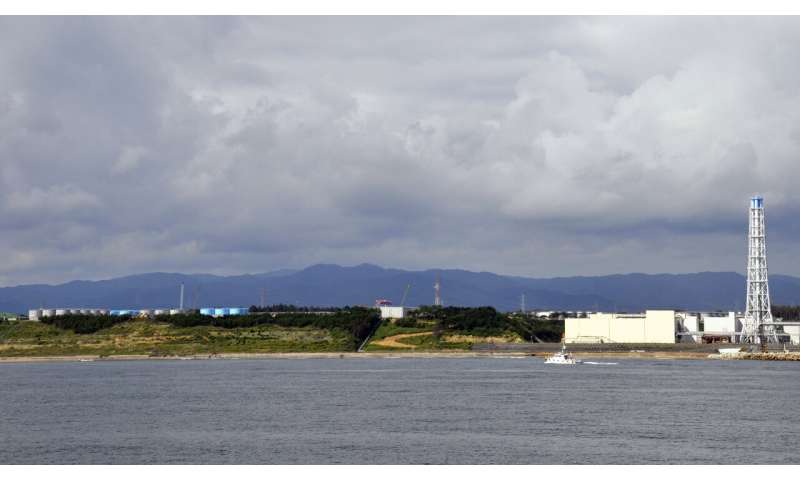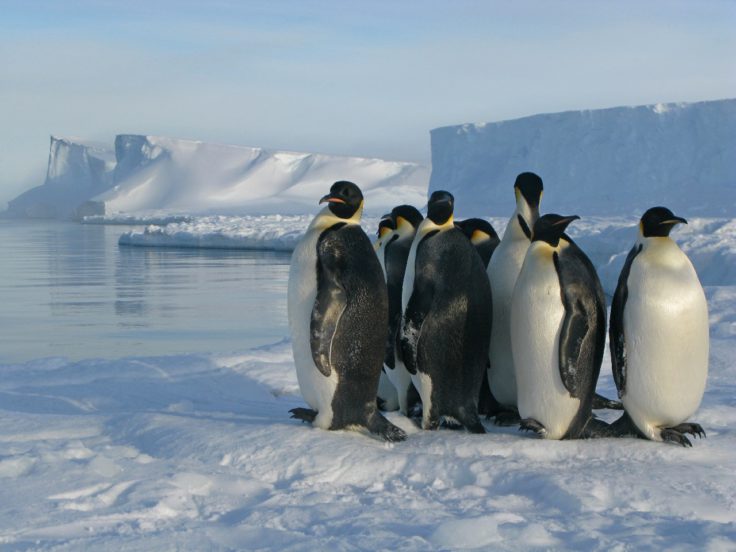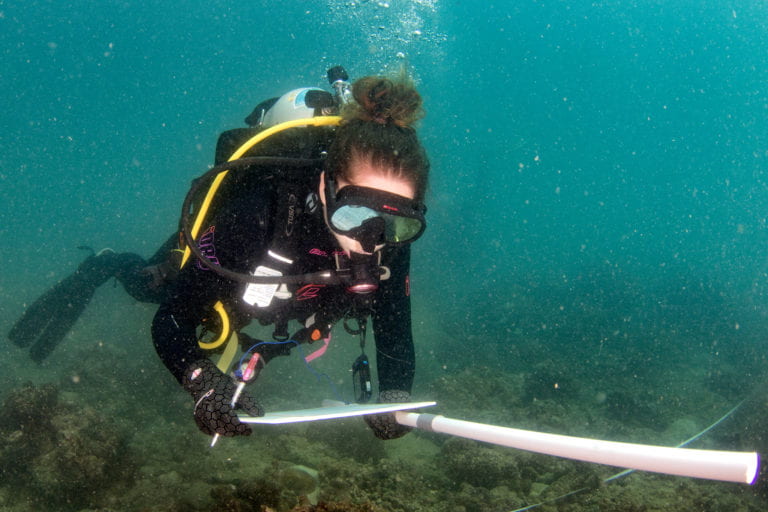800 Chinese ships found fishing in North Korea, Global community far behind United Nations Oceans Goals, Toxic pollutants found in stranded dolphins and whales, Fukushima wastewater dumping, New penguin colonies seen from space, Bulk carrier ship leak oil off Mauritius coast and more...
1. Over 800 Chinese vessels found fishing in North Korean waters in 2019
Over 800 Chinese vessels caught Pacific flying squid and other marine resources in North Korean waters last year, likely in violation of U.N. sanctions on foreign fishing adopted following Pyongyang's testing of ballistic missiles, according to officials of organizations looking into the issue. The discovery by Global Fishing Watch and the Outlaw Ocean Project, using satellite data, also suggests that overfishing in the waters has caused a sharp fall in squid catch in neighboring Japan. Global Fishing Watch, an ocean conservation nonprofit group co-founded by Google LLC, which released the outcome of the probe last week, also believes that vessels from China have been pushing North Korean wooden boats to fish far off, resulting in more than 100 of them being washed ashore in Japan every year as "ghost boats."
1. Over 800 Chinese vessels found fishing in North Korean waters in 2019
Over 800 Chinese vessels caught Pacific flying squid and other marine resources in North Korean waters last year, likely in violation of U.N. sanctions on foreign fishing adopted following Pyongyang's testing of ballistic missiles, according to officials of organizations looking into the issue. The discovery by Global Fishing Watch and the Outlaw Ocean Project, using satellite data, also suggests that overfishing in the waters has caused a sharp fall in squid catch in neighboring Japan. Global Fishing Watch, an ocean conservation nonprofit group co-founded by Google LLC, which released the outcome of the probe last week, also believes that vessels from China have been pushing North Korean wooden boats to fish far off, resulting in more than 100 of them being washed ashore in Japan every year as "ghost boats."
2. REPORT United Nations: Sustainable Development Goals - We are far behind our objective
The latest United Nations analysis of the Sustainable Development Goals (SDGs) shows that countries are failing to protect the world’s ocean and land environments. With 10 years to go until 2030 — the endpoint of the SDGs, after which they’ll be reassessed and updated — most markers of ocean and land integrity are declining amid reckless industrial activity that destroys ecosystems and over-exploits natural resources, according to the Sustainable Development Report 2020, which reviews countries' performances on the 17 SDGs so far. Overall, not a single country has achieved the 2020 targets for SDG 14: Life Below Water.
2. REPORT United Nations: Sustainable Development Goals - We are far behind our objective
The latest United Nations analysis of the Sustainable Development Goals (SDGs) shows that countries are failing to protect the world’s ocean and land environments. With 10 years to go until 2030 — the endpoint of the SDGs, after which they’ll be reassessed and updated — most markers of ocean and land integrity are declining amid reckless industrial activity that destroys ecosystems and over-exploits natural resources, according to the Sustainable Development Report 2020, which reviews countries' performances on the 17 SDGs so far. Overall, not a single country has achieved the 2020 targets for SDG 14: Life Below Water.
Read more in "Global Citizen" by pasting this URL in your browser: http://bit.do/unitednationsfail
Read more in "Global Citizen" by pasting this URL in your browser: http://bit.do/unitednationsfail
3. More seals mean more sharks off New England coast
 Seals are thriving off the Northeast coast thanks to decades of protections, and that victory for wildlife has brought a consequence for humans — more encounters with sharks. Seals are a favorite prey of large sharks such as the great white. The death this week of swimmer Julie Dimperio Holowach, who was killed by a great white off Harpswell, Maine, might have happened because the shark mistook her for a seal, authorities said. Swimmers off the New England states have learned to be more mindful in recent years due to a spate of sightings of great whites, the apex predator made famous in the movie Jaws. A shark that killed a man off Cape Cod in 2018 was also believed to be a great white.
Seals are thriving off the Northeast coast thanks to decades of protections, and that victory for wildlife has brought a consequence for humans — more encounters with sharks. Seals are a favorite prey of large sharks such as the great white. The death this week of swimmer Julie Dimperio Holowach, who was killed by a great white off Harpswell, Maine, might have happened because the shark mistook her for a seal, authorities said. Swimmers off the New England states have learned to be more mindful in recent years due to a spate of sightings of great whites, the apex predator made famous in the movie Jaws. A shark that killed a man off Cape Cod in 2018 was also believed to be a great white.
3. More seals mean more sharks off New England coast

Seals are thriving off the Northeast coast thanks to decades of protections, and that victory for wildlife has brought a consequence for humans — more encounters with sharks. Seals are a favorite prey of large sharks such as the great white. The death this week of swimmer Julie Dimperio Holowach, who was killed by a great white off Harpswell, Maine, might have happened because the shark mistook her for a seal, authorities said. Swimmers off the New England states have learned to be more mindful in recent years due to a spate of sightings of great whites, the apex predator made famous in the movie Jaws. A shark that killed a man off Cape Cod in 2018 was also believed to be a great white.
Read more in "Boston CBSLocal" by pasting this URL in your browser: http://bit.do/sealsmeanmoresharks
Read more in "Boston CBSLocal" by pasting this URL in your browser: http://bit.do/sealsmeanmoresharks
4. The weird human garbage found inside whales
Just two decades ago, it was rare to see one dead whale along New York’s shores in a single year. But this month alone, two dead humpback whales were spotted on Long Island — bringing the total to seven large whale strandings in the New York area in 2020. In the past three years, 52 carcasses of the large sea mammals have washed up in the waters around New York — averaging around one stranding every 27 days, according to the Atlantic Marine Conservation Society.
4. The weird human garbage found inside whales
Just two decades ago, it was rare to see one dead whale along New York’s shores in a single year. But this month alone, two dead humpback whales were spotted on Long Island — bringing the total to seven large whale strandings in the New York area in 2020. In the past three years, 52 carcasses of the large sea mammals have washed up in the waters around New York — averaging around one stranding every 27 days, according to the Atlantic Marine Conservation Society.
Read more in "The New York Post" by pasting this URL in your browser: http://bit.do/garbageinsidewhales
Read more in "The New York Post" by pasting this URL in your browser: http://bit.do/garbageinsidewhales
5. Study finds high levels of toxic pollutants in stranded dolphins and whales
 Researchers examined toxins in tissue concentrations and pathology data from 83 stranded dolphins and whales from 2012 to 2018. They looked at 11 different animal species to test for 17 different substances. The study is the first to report on concentrations in blubber tissues of stranded cetaceans of atrazine, DEP, NPE and triclosan. It also is the first to report concentrations of toxicants in a white-beaked dolphin and in Gervais' beaked whales.
Researchers examined toxins in tissue concentrations and pathology data from 83 stranded dolphins and whales from 2012 to 2018. They looked at 11 different animal species to test for 17 different substances. The study is the first to report on concentrations in blubber tissues of stranded cetaceans of atrazine, DEP, NPE and triclosan. It also is the first to report concentrations of toxicants in a white-beaked dolphin and in Gervais' beaked whales.
5. Study finds high levels of toxic pollutants in stranded dolphins and whales
 Researchers examined toxins in tissue concentrations and pathology data from 83 stranded dolphins and whales from 2012 to 2018. They looked at 11 different animal species to test for 17 different substances. The study is the first to report on concentrations in blubber tissues of stranded cetaceans of atrazine, DEP, NPE and triclosan. It also is the first to report concentrations of toxicants in a white-beaked dolphin and in Gervais' beaked whales.
Researchers examined toxins in tissue concentrations and pathology data from 83 stranded dolphins and whales from 2012 to 2018. They looked at 11 different animal species to test for 17 different substances. The study is the first to report on concentrations in blubber tissues of stranded cetaceans of atrazine, DEP, NPE and triclosan. It also is the first to report concentrations of toxicants in a white-beaked dolphin and in Gervais' beaked whales.
Read more in "Florida Atlantic University" by pasting this URL in your browser: http://bit.do/strandedwhalesdolphines
Read more in "Florida Atlantic University" by pasting this URL in your browser: http://bit.do/strandedwhalesdolphines
6. Mix of contaminants in Fukushima wastewater, risks of ocean dumping
Read more in "Science", by pasting this URL in your browser: http://bit.do/fukushimafloodgates
7. Scientists discover new penguin colonies from space
A new study using satellite mapping technology reveals there are nearly 20% more emperor penguin colonies in Antarctica than was previously thought. The results provide an important benchmark for monitoring the impact of environmental change on the population of this iconic bird. Emperor penguins need sea ice to breed and are located in areas that are very difficult to study because they are remote and often inaccessible with temperatures as low as ?50°C (?58 degrees Fahrenheit). For the last 10 years, British Antarctic Survey (BAS) scientists have been looking for new colonies by searching for their guano stains on the ice.
Read more in "British Antarctic Survey (BAS)" by pasting this URL in your browser: http://bit.do/penguincolonies
Read more in "British Antarctic Survey (BAS)" by pasting this URL in your browser: http://bit.do/penguincolonies
8. Plastics, pathogens and baby formula: What’s in your shellfish?
The first landmark study using next-generation technology to comprehensively examine contaminants in oysters in Myanmar reveals alarming findings: the widespread presence of human bacterial pathogens and human-derived microdebris materials, including plastics, kerosene, paint, talc and milk supplement powders. The study — led by scientists from the University of California, Irvine, in collaboration with Environmental Defense Fund, Cornell University and the University of Queensland — was conducted in the eastern Andaman Sea through partnerships with local researchers in Myanmar in the densely populated but still rural Tanintharyi region. The study concludes that coastal urbanization and lack of sewage treatment increases contamination in seafood and can cause potential health risks to humans, even large distances from pollution sources.
Read more in "University of California - Irvine", by pasting this URL in your browser: http://bit.do/plasticpathogens
9. Lab-grown and replanted corals to spawn in the Florida Keys
Not long after the August full moon, Florida's reefs are the scene of an annual show of sexual reproduction called the coral spawn, with coral colonies releasing masses of tiny white, pink and orange spheres into the ocean. This year, for the first time, corals raised by scientists in a lab and transplanted to the natural reefs are primed to join the spawn—a promising milestone for ongoing efforts to restore the ravaged reef systems off South Florida. "This is really amazing because we had no idea what to expect when we planted these corals five years ago," said Hanna Koch, a coral reproduction scientist at Mote Marine Laboratory, which is using a technique called micro fragmentation-fusion to raise the corals on land and plant them on local reefs.
Read more in "Miami Herald", by pasting this URL in your browser: http://bit.do/coralmilestone
10. Washington dam removal means 37 more miles of salmon habitat restored
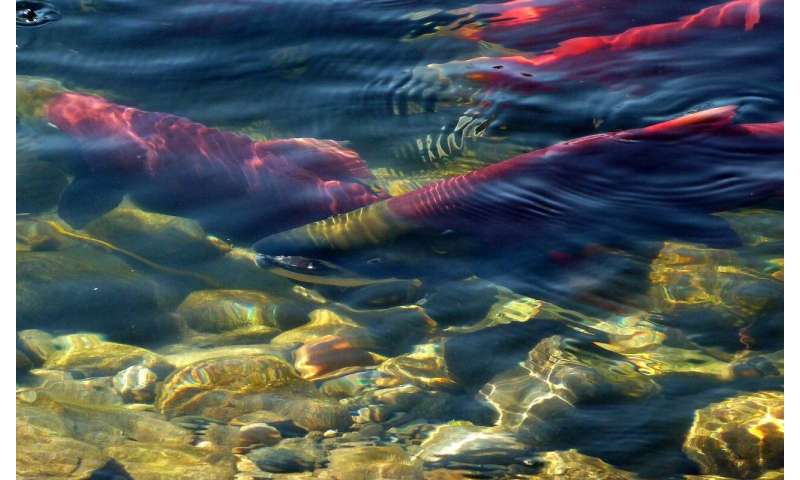
Washington's dam-busting summer is still rolling, with two more dams coming down on the Pilchuck River, opening 37 miles of habitat to salmon for the first time in more than a century. The $2 million dam removal project is a collaboration between the City of Snohomish and Tulalip Tribes, and will benefit multiple species of salmon, including threatened chinook salmon, crucial food for endangered southern resident killer whales. It's the state's second dam teardown project in two months. In July, the city of Bellingham blew up its Nooksack Diversion Dam on the Middle Fork of the Nooksack River, opening 16 miles of habitat for salmon, including chinook.
Read more in "PHYS.org", by pasting this URL in your browser: http://bit.do/salmonhabitat
11. Seal-eating killer whales accumulate large amounts of harmful pollutant
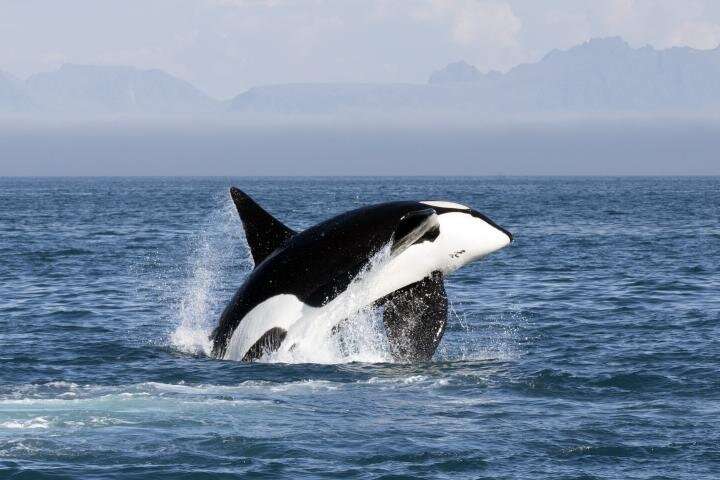
Research of killer whales in the southern Atlantic ocean and Mediterranean have shown that their blubber contains high levels of pollutants called PCBs, whilst killer whales found along the Norwegian coast have been assumed to be healthy and at low risk from pollution. This is because when researchers took samples from nine Norwegian killer whales in 2002, they found lower levels of pollutants than other populations.
Read more in "PHYS.org", by pasting this URL in your browser: http://bit.do/killerwhales
12. Fossil mystery solved: Super-long-necked reptiles lived in the ocean, not on land
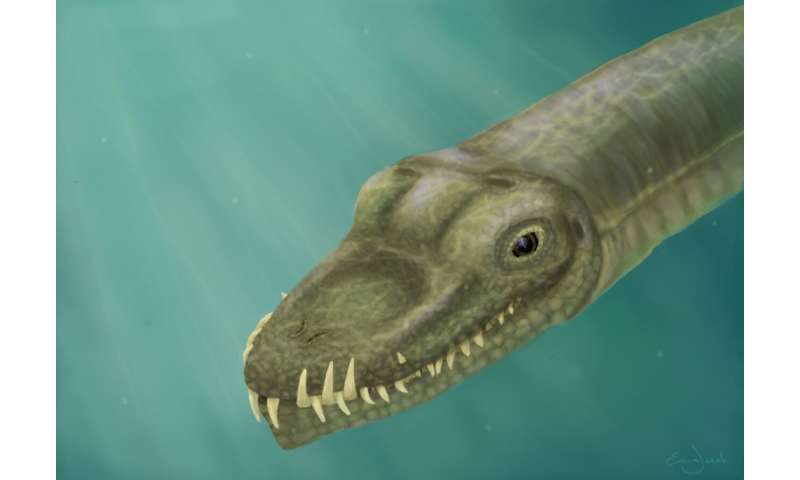 A fossil called Tanystropheus was first described in 1852, and it's been puzzling scientists ever since. At one point, paleontologists thought it was a flying pterosaur, like a pterodactyl, and that its long, hollow bones were phalanges in the finger that supported the wing. Later on, they figured out that those were elongated neck bones, and that it was a twenty-foot-long reptile with a ten-foot neck: three times as long as its torso. Scientists still weren't sure if it lived on land or in the water, and they didn't know if smaller specimens were juveniles or a completely different species -- until now. By CT-scanning the fossils' crushed skulls and digitally reassembling them, researchers found evidence that the animals were water-dwelling, and by examining the growth rings in bones, determined that the big and little Tanystropheus were separate species that could live alongside each other without competing because they hunted different prey.
A fossil called Tanystropheus was first described in 1852, and it's been puzzling scientists ever since. At one point, paleontologists thought it was a flying pterosaur, like a pterodactyl, and that its long, hollow bones were phalanges in the finger that supported the wing. Later on, they figured out that those were elongated neck bones, and that it was a twenty-foot-long reptile with a ten-foot neck: three times as long as its torso. Scientists still weren't sure if it lived on land or in the water, and they didn't know if smaller specimens were juveniles or a completely different species -- until now. By CT-scanning the fossils' crushed skulls and digitally reassembling them, researchers found evidence that the animals were water-dwelling, and by examining the growth rings in bones, determined that the big and little Tanystropheus were separate species that could live alongside each other without competing because they hunted different prey.Read more in "Field Museum", by pasting this URL in your browser: http://bit.do/fossilmystery
13. Bulk carrier sitting on reef off Mauritius starts to leak bunker fuel
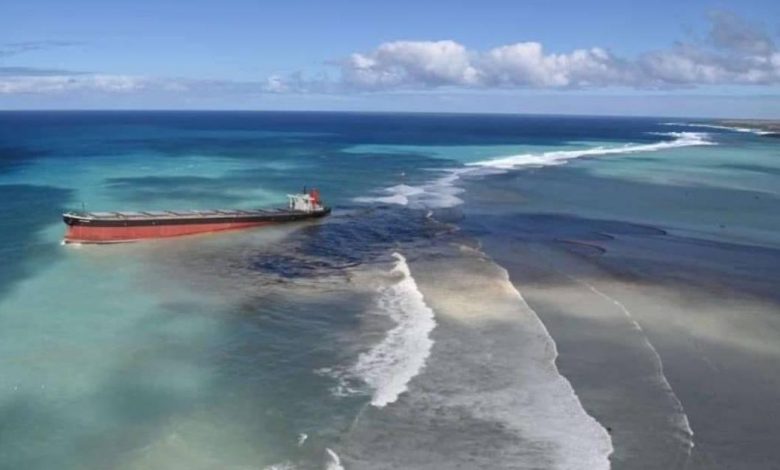
The 203,000 dwt Wakashio bulk carrier, which ran aground on a reef just off the southeast coastline of Mauritius on July 26, has started spilling bunker fuel into the famous azure seas of the French-speaking republic. Local authorities have ordered the public, including boat operators and fishermen, not to venture to the beach and in the lagoons of Blue Bay, Pointe d’Esny and Mahebourg. “All highly sensitive areas including the Ramsar site of Pointe d’Esny and the Blue Bay Marine Park have been protected with booms,” a government spokesperson said. The ship, owned by Japan’s Nagashiki Shipping, was en route from China to Brazil when it ran aground with 3,800 tonnes of bunker fuel onboard. “Due to the bad weather and constant pounding over the past few days, the starboard side bunker tanker has been breached and an amount of fuel oil has escaped into the sea. Oil prevention measures are in place and an oil boom has been deployed around the vessel,” a spokesperson for the Japanese shipping company said today.
Read more in "Splash 247", by pasting this URL in your browser: http://bit.do/bunkerfuelleak
14. Dolphin calf entangled in fishing line only lived two years following rescue
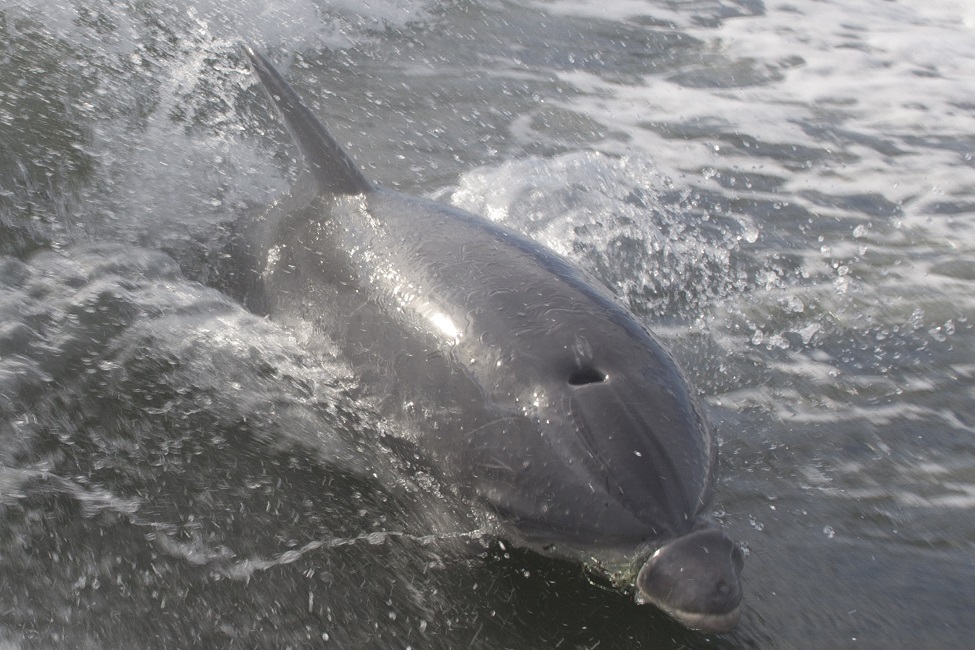 More than 1,000 bottlenose dolphins (Tursiops truncatus) live in the Indian River Lagoon year-round. The estuary system along the central east coast of Florida stretches about 250 kilometers and provides valuable shallow water habitat for this species. The lagoon also is popular for recreational fishing spots, which often coincide with bottlenose dolphin feeding habitats because they target the same species of fish. In fact, it very common to observe interactions between dolphins and recreational fishermen. These interactions include dolphins going after bait or captured fish, illegal feeding of dolphins, and dolphin encounters during release of undersized or non-targeted fish.
More than 1,000 bottlenose dolphins (Tursiops truncatus) live in the Indian River Lagoon year-round. The estuary system along the central east coast of Florida stretches about 250 kilometers and provides valuable shallow water habitat for this species. The lagoon also is popular for recreational fishing spots, which often coincide with bottlenose dolphin feeding habitats because they target the same species of fish. In fact, it very common to observe interactions between dolphins and recreational fishermen. These interactions include dolphins going after bait or captured fish, illegal feeding of dolphins, and dolphin encounters during release of undersized or non-targeted fish.Read more in "Florida Atlantic University", by pasting this URL in your browser: http://bit.do/dolphinrescue
Opinion Pieces:
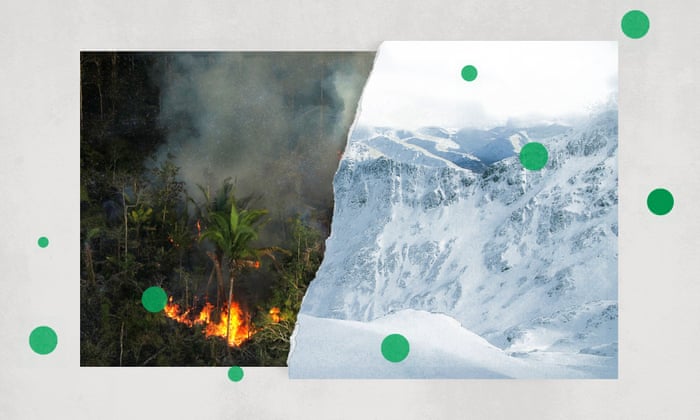
15. What can you do to fight the climate crisis?
As the climate crisis intensifies, scientists and experts agree that systemic change is critical. But while individual efforts alone aren’t enough to reverse global heating, that doesn’t mean there’s nothing we can do. We asked several climate scientists and advocates about individual actions that can make a difference.
What’s one thing you do in your day-to-day life to combat the climate crisis?
Katharine Hayhoe, atmospheric scientist: I have transitioned over 80% of the talks I give to virtual online events (100% these days!), and when I do travel, I bundle my requests and commitments such that I am doing anywhere from 4-5 to as many as 15-25 events in each location that I fly to, in order to minimize the carbon footprint of each individual event.
Adrienne Hollis, climate justice and health scientist: I am being mindful about the water shortage. I like to plant around my deck, and I use my rain barrel to water my plants. It’s a small thing, and it’s a big thing. I get up at about 6 to water my plants, and I grow my herbs and peppers. It makes me feel like I am making a difference. And feeling like you’re making a difference is important. It’s finding your way of contributing. It makes you feel like you’re a part of the fight.
Read more in "The Guardian", by pasting this URL in your browser: http://bit.do/climatecrisis1
16. For every fin-free Hong Kong wedding, ‘we can save 24 sharks’
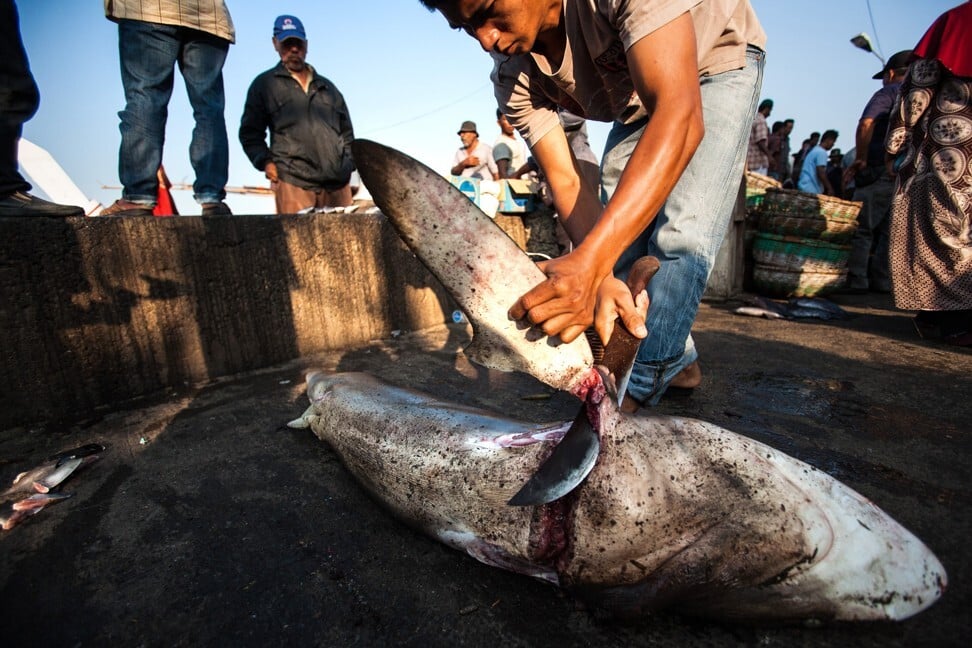
Hongkongers Bonnie Li and Hugo To share a love of scuba diving, their underwater adventures allowing them to swim with a variety of marine life, including reef sharks. So in May 2019, when the couple sat down with 50 guests for their wedding lunch at Tin Lung Heen restaurant, in The Ritz-Carlton Hong Kong, the popular wedding dish shark’s fin soup was off the menu. “I’ve been a wedding planner for a decade and in the past few years have been happy to see restaurants in the city remove shark’s fin soup from their menus,” Li says. “We both love the ocean so at our wedding we wanted to spread the word that people should refuse shark’s fin soup not just at weddings but for all occasions.”
Read more in " South China Morning Post", by pasting this URL in your browser: http://bit.do/weddingsharks
-----------------------------------------------
Sea Save Foundation is committed to raising awareness of marine conservation. The Ocean Week in Review is a team effort produced by the Sea Save staff to provide a weekly summary of the latest in marine research, policy, and news
-----------------------------------------------
Sea Save Foundation is committed to raising awareness of marine conservation. The Ocean Week in Review is a team effort produced by the Sea Save staff to provide a weekly summary of the latest in marine research, policy, and news



